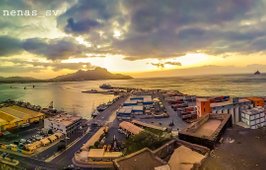
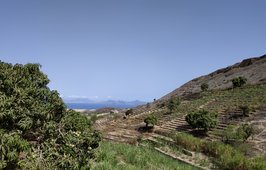
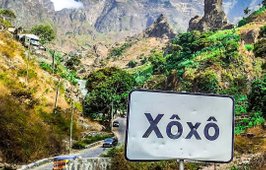
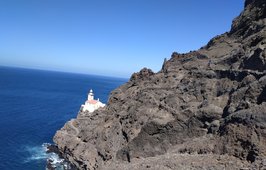
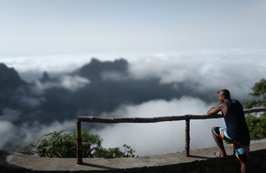
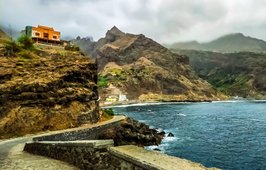
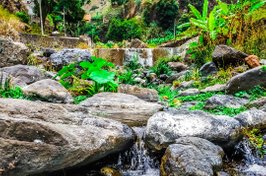
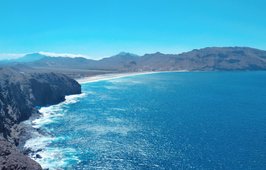
ENG
Santo Antão (Portuguese for 'Saint Anthony') is the westernmost and largest island of the geographical region of Ilhas de Barlavento, which is an administrative part of Cape Verde. The nearest island is São Vicente and is located southeast of Santo Antão. The island is also the westernmost island in Africa and also the second largest island in Cape Verde.
Fishing is one of the main sources of income on the island. Agriculture also plays a major role. Important agricultural products are sugar cane, yam, cassava, bananas, mangoes, papaya and corn. Grogue is made from the sugar cane, a type of rum that is popular throughout Cape Verde.
In recent years, tourism has emerged and is playing an increasingly important role in the island's economy. The steep landscape with alternating green and arid areas offers many opportunities for hikers, adventurous tourists and eco-tourists.
NL
Santo Antão (Portugees voor 'Sint-Antonius') is het meest westelijk gelegen en grootste eiland van de geografische regio Ilhas de Barlavento, die een bestuurlijk onderdeel is van Kaapverdië. Het meest nabijgelegen eiland is São Vicente en ligt ten zuidoosten van Santo Antão. Het eiland is tevens het meest westelijk gelegen eiland van Afrika en eveneens het op één na grootste eiland van Kaapverdië.
De visserij is een van de belangrijkste inkomstenbronnen op het eiland. Daarnaast speelt de landbouw een grote rol. Belangrijke landbouwproducten zijn suikerriet, yam, maniok, bananen, mango's, papaya en maïs. Van het suikerriet wordt grogue gemaakt, een soort rum die in heel Kaapverdië populair is.
In de laatste jaren is het toerisme in opkomst en speelt een steeds grotere rol in de economie van het eiland. Het steile landschap met afwisselend groene en dorre gebieden biedt veel mogelijkheden aan wandelaars, avontuurlijk ingestelde toeristen en ecotoeristen.
From different artists, events and activity organizers who have background or interest in Cape Verdean culture.
This is exactly what Nosagenda stands for: to be a platform that centralizes our Cape Verdean activities while motivating and inspiring people to connect in celebration of our culture.
KVK 83262792
BTW NL003796275B05
IBAN NL07KNAB0411443224